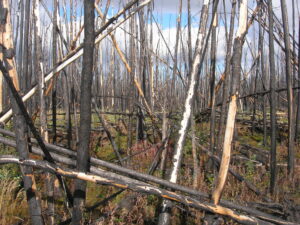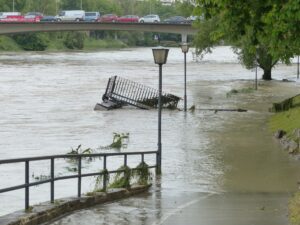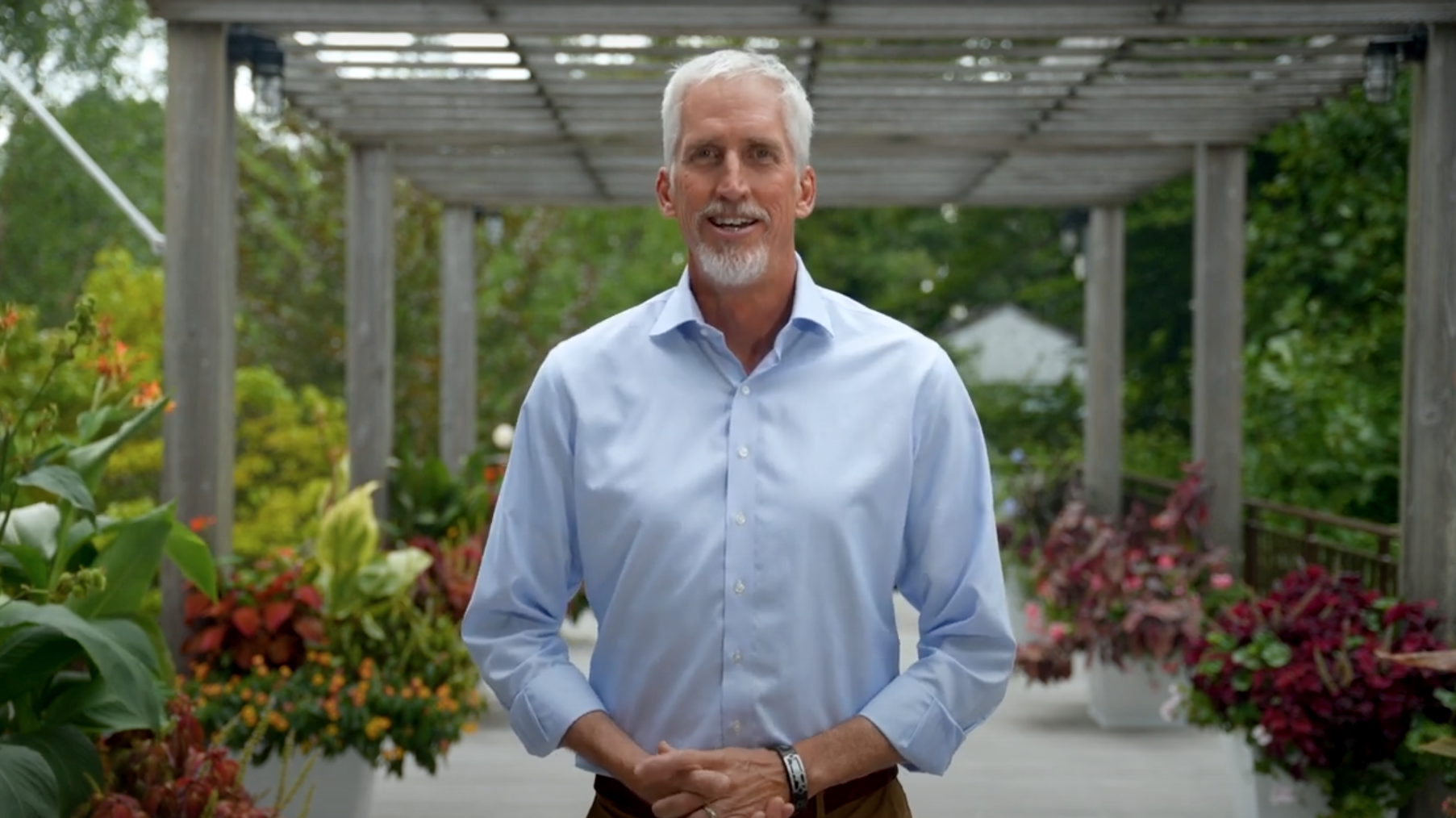What is permafrost?
Centuries-old frozen soil is under threat from rapid warming
Thinking about climate change usually brings to mind dramatically melting ice caps and rising sea levels, but there’s another threat that’s caught the attention of climate scientists for its potential to be equally as disastrous—thawing permafrost.
Located anywhere between a few centimeters to 4,900ft below the Earth’s surface, permafrost is soil composed of sand, gravel, organic matter, and ice that has been frozen for at least two consecutive years. Some has been frozen for centuries or even millenia, and it’s this ancient permafrost in the Arctic that holds the greatest significance for climate change.
Arctic permafrost stretches across Alaska, Scandinavia, Russia, Iceland, and Canada, and can be found beneath the Arctic Ocean, the Arctic tundra, alpine forests, and boreal forests. It covers 15% of the land in the Northern Hemisphere and 3.6 million people live atop it. Scientists estimate that Arctic permafrost contains 1.4 trillion tonnes of carbon, an amount more than double what is currently in the Earth’s atmosphere. That carbon sink is stable as long as it stays frozen, but when it thaws, soil microbes break down the organic matter in permafrost and release carbon dioxide and methane into the atmosphere, increasing the rate of climate change.
In many places, forests, plants, and peat act as protective insulation for Arctic permafrost. This insulation helps keep carbon-storing organic matter, like plants and animals, as well as bacteria and archaea, frozen in the permafrost. However, climate change is already causing the Arctic to warm three to four times faster than the rest of the planet.
In addition to rapid warming speeding decay, it also strips back permafrost’s protective layers with increasing fires and heavy summer rains that burn and erode away top soil layers, further accelerating thaw. In some places, permafrost thaws so abruptly that the ground can collapse. Developing infrastructure that requires deforestation and underground pipes further exposes permafrost to warming. Additionally, as sea ice melts, coastal Arctic permafrost is exposed to warmer waters. The combined result is extensive permafrost thaw across the region.
Researchers have been studying permafrost thaw to determine the size of the threat it poses. Methods such as placing soil moisture sensors in strategic locations and examining soil cores collected by drilling holes into the soil to document the different layers of permafrost help gauge the rate and extent of thaw.
In a recent TEDTalk, Dr. Sue Natali, Woodwell’s Arctic program director and senior scientist, cautioned that, “By the end of this century, greenhouse gas emissions from thawing permafrost may be on par with some of the world’s leading greenhouse-gas-emitting nations.”
There are already visible signs of vast permafrost thaw in the Arctic. Since ice is an essential part of the ground’s structural integrity, the soil becomes unstable when it thaws. This leads to dangerous situations like landslides, sinkholes, and destabilized infrastructure that threaten millions of people. Remote communities are particularly impacted, losing access to roads and sources of freshwater.
For both the carbon it threatens to release, and the destabilizing impacts it has on Arctic residents, permafrost thaw is a serious threat. One that, as the Arctic continues to warm, demands urgent attention and remediation.
Until now, that attention has been slow in coming. Read about why combatting permafrost thaw is such a complex issue in part two of our Permafrost series: “The critical missing expense in global climate budgets.”
How stopping Alaskan wildfires can slow climate change
Climate change is worsening Alaskan wildfires, which, in turn, are worsening climate change. Here’s how to break this vicious cycle

In the carbon-rich boreal forests that extend across the globe just below the Arctic Circle, a vicious climate-wildfire cycle is playing out, one that poses both an accelerating climate threat and an unrealized opportunity to stanch a large and growing source of greenhouse gas emissions.
Consider Alaska. This summer, wildfires spread across the state’s forests at a historic—and terrible—pace. From June through August, wildfires scorched more than 3.1 million acres across the state, an area larger than Yellowstone and Yosemite National Parks combined. That’s nearly half of the nearly 5.7 million acres burned across the U.S. this year to date, according to the National Interagency Fire Center. As they burned, Alaskan wildfires sent more than 150 million metric tons of carbon dioxide into the atmosphere, the carbon pollution equivalent of driving 32 million gas-powered cars for a year.
Boreal forests are massive carbon stores. They hold, mainly in their soils, about two thirds of all the carbon stored by the world’s forests. While wildfires occur naturally in these forests, we and other climate researchers have been observing how climate change is driving dramatic increases in fire frequency and severity.
Read more on Scientific American.
Climate change for preschoolers: A TV show explores unmapped ground
There are almost no books, TV shows or other tools to help parents and teachers talk to preschoolers about climate change. “Octonauts: Above and Beyond” is one of the first to try.

Four-year-old Francis Gaskin, who lives with his family in Houston, has a favorite episode of his favorite new Netflix cartoon: When the Amazon rainforest canopy dries up from too much heat, the manic howler monkeys must move into the lower realms of the forest, creating havoc among the other rainforest residents. “They had to find a new home,” Francis explained during a video interview.
“I noticed something else,” the preschooler added. “The frogs were going to lay their eggs in the water, but there was no water in the stream because there was zero rain.”
“Sometimes the Earth warms up,” he said.
Francis’ favorite show is “Octonauts: Above and Beyond,” the recent spinoff of a long-running BBC program, and one of the first television shows directed at very young children to explicitly address climate change. The program attempts to strike a delicate balance: gently showing three- and four-year-olds that their world is already changing, without frightening them with the consequences.
Continue reading on The New York Times.
What’s New?
A recent paper offers new insight into the state of global forests. Using remote sensing imagery from MODIS satellites, researchers were able to categorize forest condition in two important biomes—the Amazon and the Siberian Taiga—differentiating between high stability, low stability, and non-forested areas. These “stability classes” provide another metric of assessing the conservation and carbon value of land, as high stability forests tend to be healthier, more resilient, primary forest stands that store large amounts of carbon and contribute to cooling the planet more than lower stability forests.
“Mature forests have higher biodiversity and create their own microclimate,” says paper co-author and Woodwell Associate Scientist, Brendan Rogers. “They’re more resistant to drought and other types of disturbance. And then because of that, they tend to be more stable in the face of environmental perturbations over time.”
Understanding forest stability
To estimate forest stability, researchers analyzed satellite data that combined measures of photosynthetic radiation with a canopy water stress index. That new approach was able to identify whether or not a forest has been disturbed by either human land use (ex. logging) or natural processes (wildfire, insects outbreaks, etc.) and map the degradation level.
Co-author Dr. Brendan Mackey from Griffith University in Australia says that stability mapping is a first critical step in making an inventory of the world’s remaining primary forests which store more carbon, support the most biodiversity, and deliver the cleanest water.
According to Dr. Rogers, the less interruption in the ecological processes of the forest, the more secure the carbon stored in both the trees and soils are. Further human interference in an unstable forest could tip it into decline.
“I think one of the problems for primary forest conservation globally has been this idea that it’s either a forest or not a forest. So, internationally agreed upon definitions of what constitutes a forest sets a pretty low bar. You can get away with calling a plantation with very young trees a forest, but that could have been converted from a high biomass mature forest, and they’re simply not the same—not in terms of carbon, biodiversity, or ecosystem services,” says Dr. Rogers.
What this means for forest conservation
Using a gradient of forest stability instead of a black and white definition of forest/not-forest allows for more nuanced decision-making where both carbon monitoring and conservation planning are concerned.
“The first priority is to protect stable forests from further human disturbance, as once an area is deforested, it takes decades to centuries—and in some cases millenia—for it to regrow to a primary state. The second priority is to identify forest areas where restoration efforts will be most cost effective,” says Dr. Mackey.
According to the paper’s lead author, Dr. Tatiana Shestakova, this means places where a small investment could have bigger positive results.
“If you pick a forest that was degraded in some way, but it still keeps patches of more or less healthy forests, you can reinstate ecological processes faster and easier,” says Dr. Shestakova.
Dr. Shestakova said she encourages other researchers to apply the methods to their particular regions of expertise and expand estimates of forest stability globally.
“The benefit of this approach is that it was tested in such contrasting ecoregions, and has been proven to be a simple and efficient way to assess this important dimension of forest condition,” says Dr. Shestakova.
We are nearly one fifth of the way through what has been called the decisive decade for climate change, and just weeks from the next round of UN climate negotiations at COP27 in Egypt. In recent months, powerful storms, devastating flooding, and lethal heat waves have all driven home the severity of the threat and the urgent need for action.
At this critical juncture, Woodwell Climate scientists are ramping up efforts to see natural systems—both the risks and the solutions they present—fully and fairly accounted for in climate policy. This week, more than a dozen Woodwell Climate staff, board members, and partners traveled to both Washington, D.C. and New York, NY to connect with decision-makers.
Congressional Testimony
On Tuesday, September 20, 2022, Woodwell Arctic Program Director and Permafrost Pathways lead Dr. Sue Natali testified before the House Committee on Science, Space, and Technology. The subject of the hearing was “Strengthening Science to Respond to a Rapidly Changing Arctic.” Dr. Natali highlighted the devastating impacts of rapid landscape change facing Northern communities and the global climate threat posed by greenhouse gas emissions from permafrost thaw.
“Greenhouse gas emissions from thawing permafrost could use up 25 to 40% of the remaining carbon budget to stay below 2°C warming,” Natali told the Committee. “Yet these emissions are generally underaccounted, in part, due to major gaps in Arctic carbon monitoring and modeling. The failure to accurately account for permafrost thaw undermines the integrity and efficacy of global mitigation policy.”
The Permafrost Pathways project that Dr. Natali launched in April with support through the TED Audacious Project is partnering with Alaska Native communities to co-develop strategies for responding to climate hazards, while also working with high-level policymakers to incorporate permafrost thaw emissions and impacts into federal and international climate policy.
Dr. Natali called for increased federal research support to expand the scope and timeframe of research, improve interagency coordination and international collaboration, and support Alaska Native tribes to coproduce knowledge and lead climate change research.
Congresswoman Haley Stevens summed up the impact of the testimony, saying “I came into this hearing thinking ‘ice, ice, ice, ice.” I’ve read a lot of articles about a world with ice. And now I’m leaving thinking ‘permafrost, permafrost, permafrost.’”
Deep Dive: Read Dr. Natali’s full written testimony.
DC Fly-in
Increasing research capacity was also a theme during Woodwell’s first DC Fly-in. Together with our partners at the Niskanen Center, Woodwell Climate scientists, staff, and board members participated in fifteen meetings with elected officials and congressional offices, focusing on opportunities to support natural climate solutions through the next Farm Bill.
“This fly-in highlights Woodwell’s commitment to impact,” said Chief of External Affairs David McGlinchey. “We’re meeting with congressional offices on both sides of the aisle to offer our expertise and ensure they have the tools they need to make climate smart decisions. To affect change, it’s essential that our science gets into the hands of decision makers.”
Based on our expertise in soil and forest carbon storage, Woodwell has identified seven priorities for inclusion in the next Farm Bill, due for passage in 2023:
- Ensure carbon markets are credible mechanisms for providing real climate benefits as well as financial benefits to producers.
- Use the Conservation and Forestry titles of the Farm Bill to encourage natural climate solutions.
- Maximize the carbon storage potential in U.S. forests while reducing wildfire risk and avoiding greenhouse gas emissions from fires.
- Increase eligibility and usage of crop insurance to protect small-scale farmers from the increasing physical hazards of climate change.
- Increase research capacity to meet the need for better monitoring and standardization, as well as building a natural lands and environmental data infrastructure, which are needed for carbon markets.
- Incorporate Woodwell’s safeguards and principals for the implementation of natural climate solutions.
Deep Dive: Explore Woodwell Climate’s Farm Bill 2023 Priorities
Climate Week NYC
While one Woodwell delegation was in Washington, D.C., another was in New York for Climate Week NYC 2023. In addition to meeting with partners and participating in a range of events on natural climate solutions, Woodwell collaborated with One Earth to host a hybrid event at The Explorers Club on Wednesday evening.
Arctic Program Director Dr. Sue Natali and Tropics Program Director Dr. Mike Coe shared updates from Alaska and Brazil, highlighting climate connections between the two disparate regions. The inextricable human element in rapid landscape change and the importance of supporting Indigenous leadership was a common theme.
“Humans are not separate from nature. We are nature,” said Dr. Natali. “It’s critical, if we want to find solutions to climate change that are just and that are viable, that we have Indigenous people leading the charge and providing us with guidance.”
Dr. Coe echoed that sentiment and emphasized the need to understand and work with the full range of land stewards to effectively conserve forests. His work has identified four key groups of landholders in the Brazilian Amazon whose needs and wellbeing must be centered in efforts to develop effective solutions to tropical deforestation. That includes bolstering the land tenure rights and resources of Indigenous communities, also providing technical support to small-scale farmers, incentivizing landholders to forgo legal rights to deforest, and preventing illegal deforestation and burning.
While both speakers were unflinching in their descriptions of Arctic warming and tropical deforestation, many attendees said the presentations left them feeling more connected and motivated. Dr. Heather Goldstone, who moderated the conversation, called on all those in attendance to continue that by sharing what they were learning with their own families, friends, and peers.
Deep Dive: Watch the full event recording.
The climate future is now. Humans navigate a ‘Perilous Course’ on the East Coast.

After murky water from the Mamaroneck River gutted the sanctuary, the rotting pews in First Baptist Church sat empty for months.
When the faithful returned, they wore whatever remained of their Sunday best. A blush pink blazer. A dress shirt buttoned tight around an Adam’s apple. Ladies white gloves.
Some parishioners were still displaced from their apartments and houses, lives scattered across hotel rooms, shelters, friends’ couches.
Continue reading on MSN.

Dr. Max Homes, President and CEO of Woodwell Climate Research Center, highlights our work over the last year and gives you a sneak peek of what we have going on this fall. Thank you for being part of the Woodwell Climate team and supporting our work!







